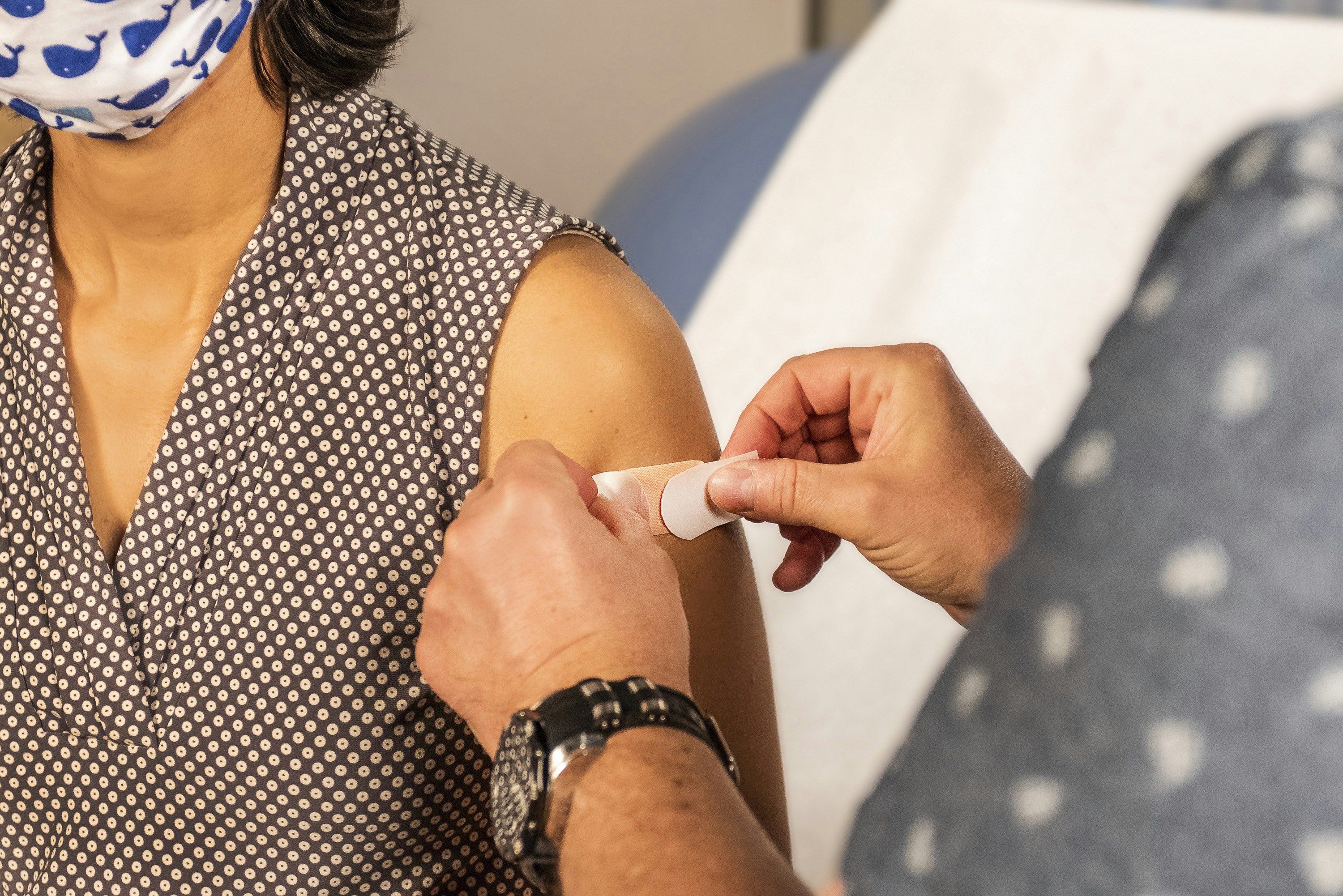How Reasoning Against COVID-19 and Flu Vaccines Differ
American adults expressed an interest in more clinical data for COVID-19 vaccines last year. How will it affect this season's booster shot uptake?
By
Kevin Kunzmann
| Published on September 4, 2024
6 min read
Credit: Unsplash / CDC

Adults in the United States were less likely to receive a COVID-19 vaccine than influenza vaccine during the 2023-24 season, according to data from a nationally representative survey that showed COVID-19 vaccine hesitancy was largely due to the wish for “more clinical research,” as well as concerns over the vaccines’ safety versus the annual flu shot.
Despite these findings, a similar rate of adults said they believe either vaccine is efficacious for preventing the viruses.
A team of investigators reported survey findings in a research letter that which showed a greater national distrust of the benefits versus risks of COVID-19 vaccines compared to that of flu vaccines—despite robust data showing the former may be more efficacious and similarly safe to the latter. The team believe the data show a need for more nuanced, and disease-specific, approaches to vaccine education be provided to eligible individuals.
Investigators sought to examine the attitudes toward COVID-19 and flu vaccination through a survey study regarding the now seasonal tendencies of US adults with available booster doses for both viruses. They hoped their research would elucidate guidance for programmatic and policy-related decisions going forward.
“As the viral landscape shifts, there is new urgency to understand US adults’ views on relevant vaccines, including whether they perceive annual vaccines similarly, or whether there are differences that may impact coadministration and communications,” they noted.
Public health-related research in recent years has additionally observed a “spillover” effect of increasing overall vaccine hesitancy for other diseases, such as human papillomavirus (HPV) and hepatitis B virus (HBV), in the wake of the rapid development of COVID-19 vaccines.
The team’s analysis included findings from a nationally representative, probability-based survey sample of US adults aged at least 18 years old, conducted from July 7 – 16 of this year. Respondents were prompted to provide their attitudes toward the effectiveness and safety of COVID-19 and flu vaccines, their own intentions with vaccination opportunities, and any major reasons they may have for hesitancy to receive such a vaccine. Investigators assessed data for both all adults and those aged at least 50 years old, who may have higher risk of severe illness due to the flu or COVID-19.
The final analysis included 1430 respondents. Adults primarily believed COVID-19 vaccines and flu vaccines were “very effective” (42 percent and 40 percent, respectively), followed by “somewhat effective (28 percent and 38 percent, respectively). Just 20 percent of respondents believed COVID-19 vaccines were “not too effective” or “not at all effective”; even fewer (11 percent) believed so for the flu vaccine.
Similarly, a majority of respondents believed COVID-19 vaccines were “very safe” or “somewhat safe” (70 percent); even more believed so for flu vaccines (74 percent). Despite this, only 54 percent and 64 percent of respondents were somewhat or very likely to get the COVID-19 or flu vaccination this season.
Rationale for vaccine hesitancy varied significantly among adults were not likely to get the COVID-19 or flu vaccines. Among those against the COVID-19 vaccine, the most commonly reported reasons included the following:
- Wanting to see more research done on the updated vaccine (60 percent)
- Worried about the safety of the updated vaccine (51 percent)
- Distrust of government agencies that which promote the updated vaccine (45 percent)
- Disbelief an updated vaccine would be effective in protecting against the virus (40 percent)
Among those against the flu vaccine, the most commonly reported reasons included the following:
- A preference to attempt to receive natural immunity from infection (37 percent)
- A feeling the people are expected to get too many vaccines in general (30 percent)
- Distrust of government agencies that which promote the updated vaccine (27 percent)
- Disbelief an updated vaccine would be effective in protecting against the virus (27 percent)
“Results were similar among adults aged 50 years and older,” investigators noted. “Subanalyses by degrees of hesitancy (somewhat, not too, and not at all likely) show that many differences in reasons for hesitation held along the continuum, with greater proportions having concerns about COVID-19 vaccines at each degree of hesitancy.”
The team concluded that health care providers should expected a limited demand for COVID-19 vaccines, and only moderate interest in the annual flu shot. “Where coadministration is offered, communications should lead with the more popular influenza vaccine, provide consistent messaging on safety and effectiveness of both vaccines, and address vaccine-specific beliefs, such as the limits of protection from prior COVID-19 infection,” they wrote.
They additionally stressed the importance of public health agencies and leaders working collaboratively with trusted messengers in community settings to help foster better trust in vaccines and their supporting clinical data. “Vaccine hesitancy in the US is not monolithic, and it is essential that health professionals and communicators address nuances in public opinion to promote vaccine uptake this season and beyond,” they concluded.
This article was originally published on sister site HCPLive.

